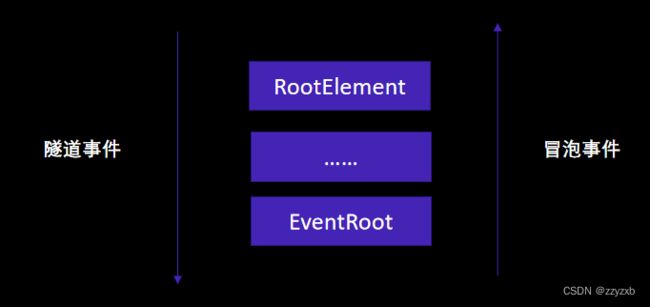- WPF Prism Module按需加载和自动加载
她说彩礼65万
WPFPrism框架wpf
[Module(ModuleName="ModuleA",OnDemand=true)]publicclassModuleAModule:IModule{publicvoidOnInitialized(IContainerProvidercontainerProvider){varregionManager=containerProvider.Resolve();regionManager.Reg
- wpf Prism中的事件聚合器的封装和使用
硅谷调试员
wpfc#
在Prism中,有一个重要的功能,就是事件聚合器,也就是消息机制,是大家常用的功能。主要是为了实现不同模块之间的信息交互。在prism的官方demo中也给出了简单的使用例子。但是在实际使用过程中,模块多了,消息多了,会非常的难调试,因此我这里对消息机制做了一次封装,并且统一去管理定义各个模块用到的消息。代码比较简单,我这里只是对官方的例子做了一个改造,大家可以参考一下。红色为主要改动的部分,代码结
- WPF Prism事件聚合器EventAggregator
她说彩礼65万
WPFPrism框架wpf
Prism框架中的EventAggregator在Prism框架中,EventAggregator的主要作用是在应用程序的不同部分之间实现消息传递,使得各个模块或视图之间无需直接引用就能进行通信。它基于发布-订阅(Publish-Subscribe)模式,提供了一种集中管理事件的机制。具体来说,任何模块或视图都可以通过EventAggregator发布特定类型的事件,而其他对该事件感兴趣的模块或视
- C# 项目常用库
OSwich
wpf
1.MVVM框架(CommunityToolkit.Mvvm)平台和运行时库相独立-.NET2.0标准和.NET5(与UI框架无关)简单易用-在程序结构和编码范式上没有严格要求,即使用灵活自由组件-自由选择要使用的组件参考实现-精炼且性能好,提供了基础库的接口实现,但缺乏直接使用它们的具体类型这个包针对是.NET标准的,所以它能应用于任何平台:UWP,WinForms,WPF,Xamarin,Un
- WPF Prism模块加载 1.Appconfig的配置方式
她说彩礼65万
WPFPrism框架wpf
在使用Prism框架构建模块化WPF应用程序时,可以通过多种方式加载模块。其中一种方法是通过手动配置app.config文件来定义模块。这种方法允许你在不修改代码的情况下添加或移除模块,提高了灵活性和可维护性。手动配置app.config加载Prism模块的步骤1.添加必要的NuGet包确保你的项目中包含了以下NuGet包:Prism.Unity或其他你选择的依赖注入容器(如Prism.DryIo
- MasterDetail页调试错误:CS0263
IT落英
bug
写WPF页面的逻辑的时候,遇到了这个问题,百度了好久,记录一下问题描述:MasterDetailPage分部声明不能指定不同的基类主要是xml的问题在XAML主页中是MasterDetailPage,而不是ContentPage。做出如下修改publicpartialclassMainPage:MasterDetailPage
- C# WPF 基础知识学习(一)
埃菲尔铁塔_CV算法
c#wpf学习人工智能图像处理计算机视觉
一、WPF简介WindowsPresentationFoundation(WPF)是微软推出的一款用于构建用户界面的框架,它为开发Windows桌面应用程序提供了统一的编程模型、语言和框架。WPF将用户界面的设计与业务逻辑分离开来,采用了XAML(可扩展应用程序标记语言)来描述界面元素,使得界面设计更加直观和灵活。与传统的WindowsForms相比,WPF在图形渲染、动画效果、数据绑定等方面具有
- 示例:WPF中绑定枚举到ComboBox的方式
He BianGu
WPFwpf
一、目的:在开发过程中,经常会需要把枚举绑定到ComboxBox下拉列表中,其实方法有很多,这里面通过MarkupExtension扩展GetEnumSourceExtension去绑定到列表二、实现定义GetEnumSourceExtension类publicclassGetEnumSourceExtension:System.Windows.Markup.MarkupExtension{pri
- WPF中Grid自动布局
Now喔
WPFwpf
控件功能根据自定义行和列,快速进行排列,能够进行自定义控件间距离,减少元素进行定义间距,同时能更好的维护界面排序。代码部分usingSystem.ComponentModel;usingSystem.Windows;usingSystem.Windows.Controls;namespaceWPFApp{publicclassAutoGrid:Grid{//////列定义例如:"100,*,100
- WPF学习笔记04-控件Control_Part1
一只只对技术感兴趣的程序员
WPF学习wpf学习ui
之前我们已经学习过WPF布局了,这节我们开始简单介绍下控件。熟悉Winform的应该对控件并不陌生。WPF和Winform的渲染也是不一样的一个是基于DirectX一个是基于GDI+。在WPF中,打交道最多的控件无非就那么几种。1)布局控件。之前介绍过的,可以容纳多个控件或嵌套其他布局控件,用于在UI上组织和排列控件。比如StackPanel、Grid等控件都属于此类控件,他们都拥有共同父类---
- WPF的五种绑定模式
WangPride
wpf
WPF的五种绑定模式WPF的绑定模式(mode)是枚举的,枚举值共有5个:1、OneWay(源变就更新目标属性)2、TwoWay(源变就更新目标并且目标变就更新源)3、OneTime(只根据源来设置目标,以后都不会变)4、OneWayToSource(与OneWay相反)5、Default(可以单向或双向,是靠被值定的源或目标是否有get过set来指定的)WPF的逻辑树与视觉树基本概念:与ASP.
- 浅述WinForm 和 WPF 的前景
^@^lemon tea^@^
WPF浅述WinForm和WPF前景
在.NET开发领域,WinForm和WPF都是用于创建桌面应用程序的技术框架,但它们在很多方面存在差异,对于开发者来说,也常常会思考哪个更有前途。一、WinForm1.成熟/稳定度:WinForms是较早的桌面应用程序框架,自.NET1.0以来就存在,到2025年已经存在了很长的时间。它已经经过了长时间的使用和优化,拥有成熟的开发模式和大量的可用资源(大量的文档和社区支持)。许多企业级应用在过去都
- 封装WPF绑定枚举用法
Now喔
WPFwpf
前言:在ComboBox绑定ItemsSource时候,在绑定枚举时候,我们通常是采用定义一个列表,然后一个显示和值进行分开,这样显得比较麻烦,下面进行对这部分进行封装。privateList>fruitList=new(){newTuple("苹果",FruitsEnum.Apple),newTuple("香蕉",FruitsEnum.Banana),newTuple("橙子",FruitsEn
- WPF框架介绍---Prism框架(万字长文一篇文章带你弄懂Prism)
白白白白纸呀
WPF知识总结.netc#开发语言windowswpf
目录Prism中的基本对象数据与行为对象1.BindableBase:数据绑定的基础作用与特性关键方法使用示例2.DelegateCommand/DelegateCommand:行为的封装作用与特性关键方法使用示例无参数命令带参数的命令在XAML中绑定命令Prism框架中的IoC(控制反转)容器1.核心接口与配置1.1容器配置入口1.2关键接口2.服务注册方式2.1基础注册2.2生命周期控制3.依
- C# WPF入门学习主线篇(二十四)—— 数据绑定基础
Ice bear433
学习C#WPFc#wpf学习
C#WPF入门学习主线篇(二十四)——数据绑定基础数据绑定是WPF的重要特性之一,它允许UI元素和数据源之间建立连接,从而实现数据的自动更新和显示。通过数据绑定,开发者可以减少大量的手动更新代码,使应用程序更具响应性和可维护性。本篇博客将详细介绍WPF数据绑定的基础知识,包括单向绑定、双向绑定、绑定路径和数据上下文。1.数据绑定基础数据绑定是指将控件的属性与数据源进行连接,使得控件的显示内容和数据
- WPF内嵌WCF服务对外提供接口
weixin_30633507
jsonruntime
要测试本帖子代码请记得管理员权限运行vs。我写这个帖子的初衷是在我做surface小车的时候有类似的需求,感觉这个功能还挺有意思的,所以就分享给大家,网上有很多关于wcf的文章我就不一一列举了。公司有个旧的项目是winform写的,里面就有这个内嵌的wcf,我还没怎么搞过wpf,大家都说winform太老了,于是乎我就想用wpf内嵌下试试看看能不能成功。下面是我的surfacego小车的帖子。ht
- WPF 嵌入Winform GDI 、 开启AllowsTransparenc问题
weixin_30896763
此文章可以解决2至少2个问题:1.开启AllowsTransparenc造成的GDI+组件不显示问题2.WPF组件无法覆盖嵌入WPF窗口的任何第三方GDI+组件上层方案1:自制双层原理:用一个新的窗口来承载GDI+组件,实现父窗口拖动、缩放、最小化、最大化的联动事件。缺点:电脑性能太差会出现重影。方案2:微软解决空域的方案原理:用一个新的窗口来承载GDI+组件,实现父窗口拖动、缩放、最小化、最大化
- C# WPF学习总结
战族狼魂
WPFC#c#wpf学习
经过一段时间的学习和实践,我对C#WPF(WindowsPresentationFoundation)有了更深入的理解。WPF作为一个强大的桌面应用程序开发框架,为开发者提供了丰富的UI控件、强大的数据绑定和灵活的布局系统。以下是我对C#WPF学习的一些总结:目录1.基础知识2.UI设计3.数据绑定4.动画和特效5.命令和路由事件6.自定义控件和扩展性7.性能优化和内存管理8.实战项目经验9.学习
- Unity打包程序嵌入WinForm或者WPF(2) 问题
llhswwha
Unity
嵌入方式两种,官方的-parentHandle和我的WinAPI嵌入。问题1.主程序卡死[-parentHandle]:主程序打开3D后,切换到其他程序,再切换回来,卡死。[WinAPI]:主程序打开3D后,过一段时间卡死。其实这里的打开的Unity程序也算是其他程序了。这个问题结果发现是主程序其他部分导致的。问题2.嵌入Unity的控件隐藏后,GPU使用率达到99%。所谓的Unity控件隐藏是指
- C#WPF的相关知识点
Documentlv
C#wpfc#开发语言windows
学习C#WPF的路线了解C#编程基础熟悉WPF界面设计原理掌握WPF控件的使用学习数据绑定和MVVM架构深入理解WPF动画和转换效果学习WPF中的多媒体和图形绘制掌握WPF中的布局和控件模板学习WPF中的自定义控件和样式了解C#编程基础如果你想开始学习C#编程语言,这里是一些关键的基础知识,可以帮助你快速上手。C#是什么C#是一种通用的、面向对象的编程语言,由微软公司开发。它在.NET框架上运行,
- WPF与其他技术的集成:与 WinForms、WCF 等协同工作
xcLeigh
WPF从入门到精通wpfC#优化
WPF与其他技术的集成:与WinForms、WCF等协同工作一、前言二、WPF与WinForms集成2.1技术背景与特点2.2集成的必要性2.3集成方式与代码示例三、WPF与WCF集成3.1WCF技术概述3.2集成的应用场景3.3集成步骤与代码示例3.4集成中的安全与性能考虑四、总结结束语优质源码分享WPF与其他技术的集成:与WinForms、WCF等协同工作,在软件开发领域,很少有单一技术能够满
- WPF未来展望:紧跟技术发展趋势,探索新的可能性
xcLeigh
WPF从入门到精通wpfC#
WPF未来展望:紧跟技术发展趋势,探索新的可能性一、前言二、WPF与.NET技术的融合发展2.1拥抱.NETCore2.2利用.NET5及后续版本的新特性三、WPF在新兴技术领域的应用拓展3.1与云计算的结合3.2融入物联网生态四、WPF在用户体验和设计方面的创新4.1响应式设计4.2增强的动画和交互效果五、WPF开发工具和框架的演进5.1VisualStudio的持续优化5.2新的开发框架和库的
- WPF—自定义分页
YANG-Live
WPFC#wpfc#ui
WPFDataGrid分页DataGridDataGrid美化DataGrid数据源绑定DataGrid分页页面调用分页WPFDataGrid分页DataGridDataGrid数据列表看一下DataGrid的独特属性:AlternationCount:设置ItemControl中交替项的数据,可以理解为隔几行换色设置AutoGenerateColumns:是否自动生成列CanUserAddRow
- 使用GMap.NET类库,实现地图轨迹回放。(WPF版)
源之缘-OFD专家—求职中
WPFgis.netwpfhadoop
前言实现轨迹回放,GMap.NET有对应的类GMapRoute。这个类函数很少,功能有限,只能实现简单的轨迹回放。要实现更复杂的轨迹回放,就需要自己动手了。本文介绍一种方法,可以实现复杂的轨迹回放。有句话“功夫在诗外”,GMap.NET给你提供了基本地图处理功能;但是不要让CMap.NET束缚了手脚。你需要有深刻理解地图实现原理,深入理解WPF动画的原理,才能到达随心所欲。最终的效果如下:GMap
- WPF-DataGrid的增删查改
观无
wpf
背景:该功能为几乎所有系统开发都需要使用的功能,现提供简单的案例。1、MyCommandusingSystem;usingSystem.Collections.Generic;usingSystem.Linq;usingSystem.Text;usingSystem.Threading.Tasks;usingSystem.Windows.Input;namespaceWpfApplication2
- 79.ScottPlot的MVVM实现 C#例子 WPF例子
军训猫猫头
windows开发语言c#wpfui
如何通过数据绑定在WPF中实现动态图像显示在WPF应用程序中,通过数据绑定实现动态图像显示是一种高效且优雅的方式。以下是一个简单的教程,展示如何使用ScottPlot.WPF库和MVVM模式来实现这一功能。第一步:安装必要的NuGet包首先,你需要安装ScottPlot.WPF库。这是用于绘制图表的控件库,支持WPF应用程序。你可以通过NuGet包管理器安装它:第二步:在XAML中定义控件绑定在你
- C# WPF 基础知识学习(二)
埃菲尔铁塔_CV算法
c#wpf学习计算机视觉人工智能开发语言
四、数据绑定(一)数据绑定基础绑定源和目标:数据绑定建立了UI元素(绑定目标)属性与数据源(绑定源)之间的联系。例如,将一个TextBox的Text属性绑定到一个对象的某个属性上。绑定源可以是对象的属性、集合、XML数据等,绑定目标通常是UI元素的依赖属性。绑定模式:WPF支持三种绑定模式:OneWay:数据从绑定源流向绑定目标。当绑定源属性值发生变化时,绑定目标属性会自动更新,但绑定目标的变化不
- WinForms/WPF中,如何隐藏或者显示TextBox控件的边框
解夏914
开发语言c#
在WinForms中,可以通过设置TextBox的BorderStyle属性来隐藏或显示其边框:隐藏边框:textBox1.BorderStyle=BorderStyle.None;显示边框:textBox1.BorderStyle=BorderStyle.Fixed3D;//或者BorderStyle.FixedSingle;注意,当BorderStyle设置为None时,TextBox的边框将
- 利用 WPF 和阿里云实现图片多区域文字识别并保存至 Excel
如沐春风菜鸡收割机
基于图片水印文字的智能图片分类利用水印文字实现图片精准分类图片水印文字在图片分类中的应用按照水印文字特征对图片进行分类解析图片水印文字助力图片分类excel阿里云
一、项目背景本项目旨在通过自定义指定图片的多个识别区域,利用强大的文字识别技术将这些区域内的文字提取出来,并保存到Excel表格中,方便后续的数据处理和分析。我们选择使用WPF(WindowsPresentationFoundation)作为前端开发框架,以提供友好的用户界面,方便用户自定义识别区域。同时,借助阿里云的文字识别服务,利用其先进的OCR(OpticalCharacterRecogni
- 探索WPF大屏看板:打造高效、灵活的数据展示解决方案
薄泳蕙Howard
探索WPF大屏看板:打造高效、灵活的数据展示解决方案wpf大屏1.zip项目地址:https://gitcode.com/open-source-toolkit/0298b项目介绍在现代企业中,大屏看板已成为数据展示和监控的重要工具。为了满足这一需求,我们推出了一个完整的WPF大屏看板项目源码,旨在帮助开发者快速构建和定制适用于大屏展示的看板应用。通过使用WPF技术,您可以轻松创建具有丰富视觉效果
- Spring中@Value注解,需要注意的地方
无量
springbean@Valuexml
Spring 3以后,支持@Value注解的方式获取properties文件中的配置值,简化了读取配置文件的复杂操作
1、在applicationContext.xml文件(或引用文件中)中配置properties文件
<bean id="appProperty"
class="org.springframework.beans.fac
- mongoDB 分片
开窍的石头
mongodb
mongoDB的分片。要mongos查询数据时候 先查询configsvr看数据在那台shard上,configsvr上边放的是metar信息,指的是那条数据在那个片上。由此可以看出mongo在做分片的时候咱们至少要有一个configsvr,和两个以上的shard(片)信息。
第一步启动两台以上的mongo服务
&nb
- OVER(PARTITION BY)函数用法
0624chenhong
oracle
这篇写得很好,引自
http://www.cnblogs.com/lanzi/archive/2010/10/26/1861338.html
OVER(PARTITION BY)函数用法
2010年10月26日
OVER(PARTITION BY)函数介绍
开窗函数 &nb
- Android开发中,ADB server didn't ACK 解决方法
一炮送你回车库
Android开发
首先通知:凡是安装360、豌豆荚、腾讯管家的全部卸载,然后再尝试。
一直没搞明白这个问题咋出现的,但今天看到一个方法,搞定了!原来是豌豆荚占用了 5037 端口导致。
参见原文章:一个豌豆荚引发的血案——关于ADB server didn't ACK的问题
简单来讲,首先将Windows任务进程中的豌豆荚干掉,如果还是不行,再继续按下列步骤排查。
&nb
- canvas中的像素绘制问题
换个号韩国红果果
JavaScriptcanvas
pixl的绘制,1.如果绘制点正处于相邻像素交叉线,绘制x像素的线宽,则从交叉线分别向前向后绘制x/2个像素,如果x/2是整数,则刚好填满x个像素,如果是小数,则先把整数格填满,再去绘制剩下的小数部分,绘制时,是将小数部分的颜色用来除以一个像素的宽度,颜色会变淡。所以要用整数坐标来画的话(即绘制点正处于相邻像素交叉线时),线宽必须是2的整数倍。否则会出现不饱满的像素。
2.如果绘制点为一个像素的
- 编码乱码问题
灵静志远
javajvmjsp编码
1、JVM中单个字符占用的字节长度跟编码方式有关,而默认编码方式又跟平台是一一对应的或说平台决定了默认字符编码方式;2、对于单个字符:ISO-8859-1单字节编码,GBK双字节编码,UTF-8三字节编码;因此中文平台(中文平台默认字符集编码GBK)下一个中文字符占2个字节,而英文平台(英文平台默认字符集编码Cp1252(类似于ISO-8859-1))。
3、getBytes()、getByte
- java 求几个月后的日期
darkranger
calendargetinstance
Date plandate = planDate.toDate();
SimpleDateFormat df = new SimpleDateFormat("yyyy-MM-dd");
Calendar cal = Calendar.getInstance();
cal.setTime(plandate);
// 取得三个月后时间
cal.add(Calendar.M
- 数据库设计的三大范式(通俗易懂)
aijuans
数据库复习
关系数据库中的关系必须满足一定的要求。满足不同程度要求的为不同范式。数据库的设计范式是数据库设计所需要满足的规范。只有理解数据库的设计范式,才能设计出高效率、优雅的数据库,否则可能会设计出错误的数据库.
目前,主要有六种范式:第一范式、第二范式、第三范式、BC范式、第四范式和第五范式。满足最低要求的叫第一范式,简称1NF。在第一范式基础上进一步满足一些要求的为第二范式,简称2NF。其余依此类推。
- 想学工作流怎么入手
atongyeye
jbpm
工作流在工作中变得越来越重要,很多朋友想学工作流却不知如何入手。 很多朋友习惯性的这看一点,那了解一点,既不系统,也容易半途而废。好比学武功,最好的办法是有一本武功秘籍。研究明白,则犹如打通任督二脉。
系统学习工作流,很重要的一本书《JBPM工作流开发指南》。
本人苦苦学习两个月,基本上可以解决大部分流程问题。整理一下学习思路,有兴趣的朋友可以参考下。
1 首先要
- Context和SQLiteOpenHelper创建数据库
百合不是茶
androidContext创建数据库
一直以为安卓数据库的创建就是使用SQLiteOpenHelper创建,但是最近在android的一本书上看到了Context也可以创建数据库,下面我们一起分析这两种方式创建数据库的方式和区别,重点在SQLiteOpenHelper
一:SQLiteOpenHelper创建数据库:
1,SQLi
- 浅谈group by和distinct
bijian1013
oracle数据库group bydistinct
group by和distinct只了去重意义一样,但是group by应用范围更广泛些,如分组汇总或者从聚合函数里筛选数据等。
譬如:统计每id数并且只显示数大于3
select id ,count(id) from ta
- vi opertion
征客丶
macoprationvi
进入 command mode (命令行模式)
按 esc 键
再按 shift + 冒号
注:以下命令中 带 $ 【在命令行模式下进行】,不带 $ 【在非命令行模式下进行】
一、文件操作
1.1、强制退出不保存
$ q!
1.2、保存
$ w
1.3、保存并退出
$ wq
1.4、刷新或重新加载已打开的文件
$ e
二、光标移动
2.1、跳到指定行
数字
- 【Spark十四】深入Spark RDD第三部分RDD基本API
bit1129
spark
对于K/V类型的RDD,如下操作是什么含义?
val rdd = sc.parallelize(List(("A",3),("C",6),("A",1),("B",5))
rdd.reduceByKey(_+_).collect
reduceByKey在这里的操作,是把
- java类加载机制
BlueSkator
java虚拟机
java类加载机制
1.java类加载器的树状结构
引导类加载器
^
|
扩展类加载器
^
|
系统类加载器
java使用代理模式来完成类加载,java的类加载器也有类似于继承的关系,引导类是最顶层的加载器,它是所有类的根加载器,它负责加载java核心库。当一个类加载器接到装载类到虚拟机的请求时,通常会代理给父类加载器,若已经是根加载器了,就自己完成加载。
虚拟机区分一个Cla
- 动态添加文本框
BreakingBad
文本框
<script> var num=1; function AddInput() { var str=""; str+="<input
- 读《研磨设计模式》-代码笔记-单例模式
bylijinnan
java设计模式
声明: 本文只为方便我个人查阅和理解,详细的分析以及源代码请移步 原作者的博客http://chjavach.iteye.com/
public class Singleton {
}
/*
* 懒汉模式。注意,getInstance如果在多线程环境中调用,需要加上synchronized,否则存在线程不安全问题
*/
class LazySingleton
- iOS应用打包发布常见问题
chenhbc
iosiOS发布iOS上传iOS打包
这个月公司安排我一个人做iOS客户端开发,由于急着用,我先发布一个版本,由于第一次发布iOS应用,期间出了不少问题,记录于此。
1、使用Application Loader 发布时报错:Communication error.please use diagnostic mode to check connectivity.you need to have outbound acc
- 工作流复杂拓扑结构处理新思路
comsci
设计模式工作算法企业应用OO
我们走的设计路线和国外的产品不太一样,不一样在哪里呢? 国外的流程的设计思路是通过事先定义一整套规则(类似XPDL)来约束和控制流程图的复杂度(我对国外的产品了解不够多,仅仅是在有限的了解程度上面提出这样的看法),从而避免在流程引擎中处理这些复杂的图的问题,而我们却没有通过事先定义这样的复杂的规则来约束和降低用户自定义流程图的灵活性,这样一来,在引擎和流程流转控制这一个层面就会遇到很
- oracle 11g新特性Flashback data archive
daizj
oracle
1. 什么是flashback data archive
Flashback data archive是oracle 11g中引入的一个新特性。Flashback archive是一个新的数据库对象,用于存储一个或多表的历史数据。Flashback archive是一个逻辑对象,概念上类似于表空间。实际上flashback archive可以看作是存储一个或多个表的所有事务变化的逻辑空间。
- 多叉树:2-3-4树
dieslrae
树
平衡树多叉树,每个节点最多有4个子节点和3个数据项,2,3,4的含义是指一个节点可能含有的子节点的个数,效率比红黑树稍差.一般不允许出现重复关键字值.2-3-4树有以下特征:
1、有一个数据项的节点总是有2个子节点(称为2-节点)
2、有两个数据项的节点总是有3个子节点(称为3-节
- C语言学习七动态分配 malloc的使用
dcj3sjt126com
clanguagemalloc
/*
2013年3月15日15:16:24
malloc 就memory(内存) allocate(分配)的缩写
本程序没有实际含义,只是理解使用
*/
# include <stdio.h>
# include <malloc.h>
int main(void)
{
int i = 5; //分配了4个字节 静态分配
int * p
- Objective-C编码规范[译]
dcj3sjt126com
代码规范
原文链接 : The official raywenderlich.com Objective-C style guide
原文作者 : raywenderlich.com Team
译文出自 : raywenderlich.com Objective-C编码规范
译者 : Sam Lau
- 0.性能优化-目录
frank1234
性能优化
从今天开始笔者陆续发表一些性能测试相关的文章,主要是对自己前段时间学习的总结,由于水平有限,性能测试领域很深,本人理解的也比较浅,欢迎各位大咖批评指正。
主要内容包括:
一、性能测试指标
吞吐量、TPS、响应时间、负载、可扩展性、PV、思考时间
http://frank1234.iteye.com/blog/2180305
二、性能测试策略
生产环境相同 基准测试 预热等
htt
- Java父类取得子类传递的泛型参数Class类型
happyqing
java泛型父类子类Class
import java.lang.reflect.ParameterizedType;
import java.lang.reflect.Type;
import org.junit.Test;
abstract class BaseDao<T> {
public void getType() {
//Class<E> clazz =
- 跟我学SpringMVC目录汇总贴、PDF下载、源码下载
jinnianshilongnian
springMVC
----广告--------------------------------------------------------------
网站核心商详页开发
掌握Java技术,掌握并发/异步工具使用,熟悉spring、ibatis框架;
掌握数据库技术,表设计和索引优化,分库分表/读写分离;
了解缓存技术,熟练使用如Redis/Memcached等主流技术;
了解Ngin
- the HTTP rewrite module requires the PCRE library
流浪鱼
rewrite
./configure: error: the HTTP rewrite module requires the PCRE library.
模块依赖性Nginx需要依赖下面3个包
1. gzip 模块需要 zlib 库 ( 下载: http://www.zlib.net/ )
2. rewrite 模块需要 pcre 库 ( 下载: http://www.pcre.org/ )
3. s
- 第12章 Ajax(中)
onestopweb
Ajax
index.html
<!DOCTYPE html PUBLIC "-//W3C//DTD XHTML 1.0 Transitional//EN" "http://www.w3.org/TR/xhtml1/DTD/xhtml1-transitional.dtd">
<html xmlns="http://www.w3.org/
- Optimize query with Query Stripping in Web Intelligence
blueoxygen
BO
http://wiki.sdn.sap.com/wiki/display/BOBJ/Optimize+query+with+Query+Stripping+in+Web+Intelligence
and a very straightfoward video
http://www.sdn.sap.com/irj/scn/events?rid=/library/uuid/40ec3a0c-936
- Java开发者写SQL时常犯的10个错误
tomcat_oracle
javasql
1、不用PreparedStatements 有意思的是,在JDBC出现了许多年后的今天,这个错误依然出现在博客、论坛和邮件列表中,即便要记住和理解它是一件很简单的事。开发者不使用PreparedStatements的原因可能有如下几个: 他们对PreparedStatements不了解 他们认为使用PreparedStatements太慢了 他们认为写Prepar
- 世纪互联与结盟有感
阿尔萨斯
10月10日,世纪互联与(Foxcon)签约成立合资公司,有感。
全球电子制造业巨头(全球500强企业)与世纪互联共同看好IDC、云计算等业务在中国的增长空间,双方迅速果断出手,在资本层面上达成合作,此举体现了全球电子制造业巨头对世纪互联IDC业务的欣赏与信任,另一方面反映出世纪互联目前良好的运营状况与广阔的发展前景。
众所周知,精于电子产品制造(世界第一),对于世纪互联而言,能够与结盟

